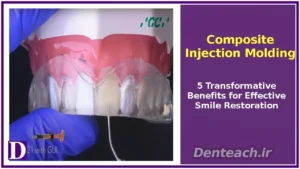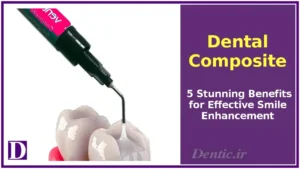
Table of Contents


Composite Injection Molding: 5 Transformative Benefits for Effective Smile Restoration

Dental Composite: 5 Stunning Benefits for Effective Smile Enhancement

Teeth Bleaching: 5 Radiant Benefits for Effective Smile Brightening

Dental Veneer: 5 Stunning Benefits for Effective Smile Enhancement

Implant-Supported Fixed Prostheses: 5 Advanced Benefits for Effective Smile Restoration

Dental implants have revolutionized restorative dentistry, offering a durable, stable, and aesthetically pleasing solution for replacing missing teeth. As prosthetic devices surgically integrated into the jawbone, dental implants mimic the natural tooth structure, providing a foundation for crowns, bridges, or dentures. Unlike traditional tooth replacement options such as bridges or removable dentures, implants offer superior longevity, functionality, and oral health benefits. This article explores the components, process, advantages, clinical applications, and future potential of dental implants, highlighting their transformative role in modern dentistry.
Understanding Dental Implants
A dental implant is a surgical component designed to replace the root of a missing tooth, interfacing with the jaw or skull bone to support a dental prosthesis. Typically made from biocompatible materials like titanium or titanium-zirconium alloys, implants provide a stable anchor for artificial teeth, restoring both function and aesthetics. The implant system integrates seamlessly with the patient’s oral anatomy, offering a natural-looking and long-lasting solution for tooth loss, which affects millions globally due to trauma, decay, or periodontal disease.
The success of dental implants relies on osseointegration, a biological process where the implant fixture fuses with the surrounding bone, creating a strong and stable foundation. This process, combined with advancements in materials and digital dentistry, has made dental implants a gold standard for tooth replacement, suitable for single-tooth restorations, multi-unit bridges, or full-arch rehabilitations.
Components of a Dental Implant System
A dental implant system consists of three primary components, each playing a critical role in the restoration process:
1. Implant Fixture
The implant fixture is a screw or post, typically made of titanium or titanium-zirconium alloys (e.g., Roxolid®), surgically placed into the jawbone. Acting as an artificial tooth root, the fixture provides a stable anchor for the prosthesis. Its biocompatible surface, often treated with technologies like SLActive® or sandblasted, large-grit, acid-etched (SLA) surfaces, promotes rapid osseointegration by enhancing bone cell attachment.
2. Abutment
The abutment is a connector attached to the implant fixture once osseointegration is complete. Protruding above the gum line, it serves as the interface between the fixture and the prosthesis. Abutments are available in various materials, such as titanium or zirconia, and can be customized to match the patient’s anatomy for optimal fit and aesthetics.
3. Prosthesis
The prosthesis is the visible, functional component of the implant system, such as a crown, bridge, or denture. Custom-designed to match the shape, size, and color of the patient’s natural teeth, the prosthesis ensures a seamless appearance and restores chewing, speaking, and smiling capabilities. Advanced CAD/CAM technologies enable precise fabrication, enhancing aesthetic and functional outcomes.
The Dental Implant Process
The dental implant procedure is a multi-stage process requiring careful planning and execution to ensure optimal results:
1. Evaluation and Planning
The process begins with a comprehensive evaluation, including a clinical examination, medical history review, and diagnostic imaging (e.g., X-rays, CBCT scans). The dentist assesses bone density, gingival health, and overall oral conditions to determine implant suitability. Digital tools, such as intraoral scanners and treatment planning software, facilitate precise planning, often incorporating guided surgery for accuracy.
2. Implant Placement
The implant fixture is surgically placed into the jawbone under local anesthesia or sedation. The procedure involves creating a small incision in the gum, drilling a precise osteotomy, and inserting the implant. In some cases, immediate placement following tooth extraction is possible, reducing the number of surgical interventions.
3. Healing and Osseointegration
After placement, a healing period of 2–6 months allows the implant to integrate with the jawbone through osseointegration. Temporary restorations may be used to maintain aesthetics and function during this phase. Bone quality, implant surface, and patient health influence the duration of this period.
4. Abutment Placement
Once osseointegration is confirmed, the abutment is attached to the implant fixture. This minor procedure may involve reopening the gum to expose the implant, followed by securing the abutment. A healing cap or temporary abutment may be used to shape the gingival tissue for optimal aesthetics.
5. Prosthesis Attachment
The final step involves attaching the custom-made prosthesis to the abutment. The prosthesis is fabricated in a dental laboratory or through chairside CAD/CAM systems, ensuring a precise fit and natural appearance. The dentist verifies occlusion, aesthetics, and function before final cementation or screw retention.
Clinical Applications
Dental implants are versatile, addressing a wide range of tooth loss scenarios:
- Single-Tooth Replacement: Replaces individual missing teeth, preserving adjacent teeth unlike traditional bridges.
- Multi-Unit Restorations: Supports fixed bridges for multiple missing teeth, providing stability and aesthetics.
- Full-Arch Rehabilitation: Enables solutions like All-on-4® or All-on-6® for edentulous patients, restoring entire arches with minimal implants.
- Implant-Supported Dentures: Enhances stability for removable dentures, improving comfort and chewing efficiency.
- Complex Cases: Used in cases requiring bone augmentation or sinus lifts, addressing challenging anatomical conditions.
Advantages of Dental Implants
Dental implants offer numerous benefits over traditional tooth replacement options:
- Stability and Durability: Implants provide a secure foundation, with success rates exceeding 95% over 10 years, per clinical studies.
- Natural Appearance: Custom prostheses blend seamlessly with natural teeth, enhancing aesthetics and confidence.
- Bone Preservation: Implants stimulate the jawbone, preventing bone resorption that occurs with tooth loss, maintaining facial structure.
- Improved Function: Restores chewing, speaking, and smiling capabilities, comparable to natural teeth.
- Longevity: With proper care, implants can last a lifetime, unlike bridges or dentures, which may require replacement every 5–10 years.
- Non-Invasive to Adjacent Teeth: Unlike bridges, implants do not rely on adjacent teeth for support, preserving natural tooth structure.
Challenges and Considerations
Despite their advantages, dental implants involve some challenges:
- Treatment Timeline: The multi-stage process, including osseointegration, can take several months, requiring patient patience.
- Cost: Implants are more expensive upfront than bridges or dentures, though their longevity often justifies the investment.
- Surgical Risks: As with any surgery, risks include infection, nerve damage, or implant failure, though these are rare (less than 5% per studies).
- Bone Requirements: Sufficient bone volume and density are necessary, potentially requiring bone grafting or sinus lifts in some cases.
- Maintenance: Implants require diligent oral hygiene and regular dental visits to prevent peri-implantitis, an inflammatory condition affecting surrounding tissues.
Future Potential and Industry Impact
Dental implants are evolving with advancements in digital dentistry and material science:
- Digital Workflows: Integration with intraoral scanners, CBCT, and CAD/CAM systems enhances precision in planning and placement.
- Advanced Materials: Innovations like zirconia implants or bioactive coatings may further improve osseointegration and aesthetics.
- AI and Predictive Analytics: AI-driven tools, like Align X-ray Insights™, could predict implant success rates or optimize treatment planning.
- Minimally Invasive Techniques: Guided surgery and flapless procedures reduce recovery times and improve patient comfort.
- Accessibility: Companies like Straumann and Nobel Biocare are developing cost-effective solutions to make implants more accessible globally.
These advancements align with the growing demand for minimally invasive, patient-centered care, positioning dental implants as a cornerstone of restorative dentistry.
Conclusion
Dental implants represent a transformative solution for tooth replacement, offering unmatched stability, aesthetics, and functionality. By mimicking the natural tooth structure and integrating with the jawbone through osseointegration, implants provide a reliable and long-lasting alternative to traditional bridges and dentures. Their ability to preserve bone, enhance oral function, and deliver natural-looking results has made them a preferred choice for millions worldwide. Despite challenges like cost and treatment duration, ongoing innovations in materials, digital tools, and surgical techniques continue to enhance their accessibility and effectiveness. For patients seeking to restore their smile and for clinicians aiming to deliver high-quality care, dental implants are a cornerstone of modern dentistry, promising a future of improved oral health and patient satisfaction. For more information, consult with a certified dental professional or visit www.ada.org for resources on implant dentistry.
- American Dental Association. (2025). Dental Implants.
- Branemark, P. I., et al. (1983). Osseointegrated implants in the treatment of the edentulous jaw. Scandinavian Journal of Plastic and Reconstructive Surgery, 16(Suppl), 1–175.
- Straumann Group. (2025). Implant Technology Overview.
- American Academy of Implant Dentistry. (2025). What Are Dental Implants?
